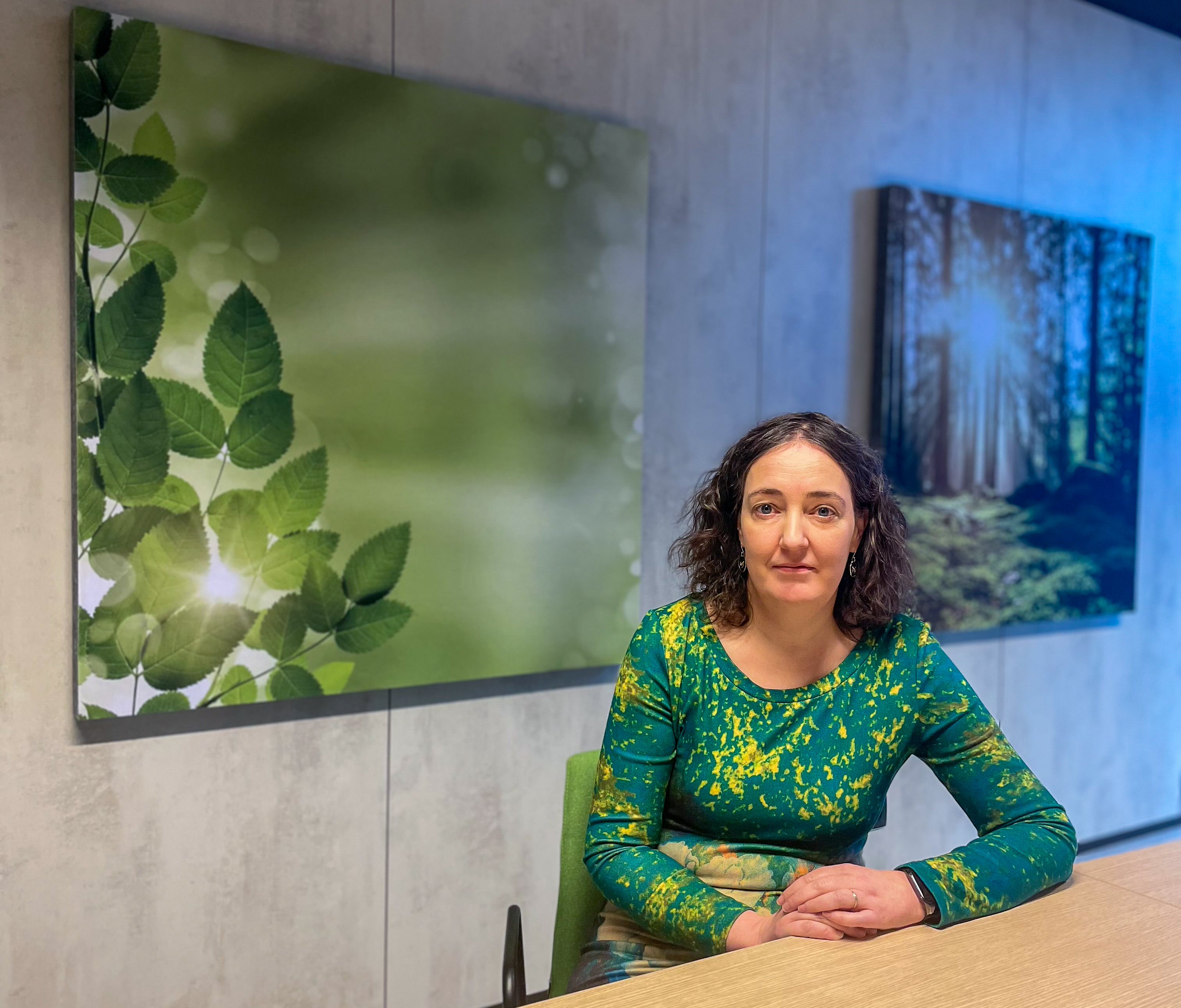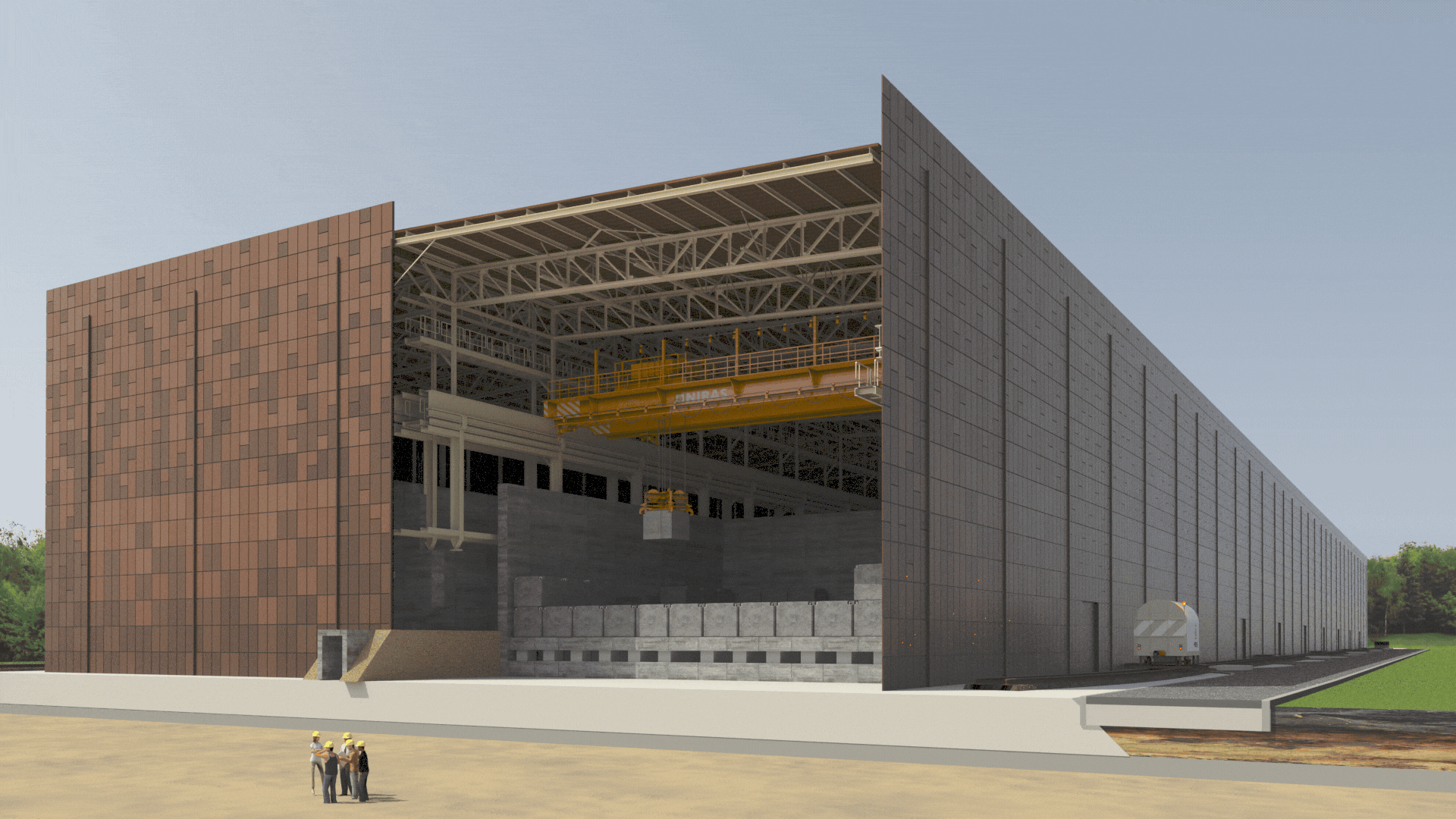The future disposal facility that will hold low and medium-level short-lived radioactive waste, and its surroundings, will be subject to ongoing monitoring for 350 years, but how do we assess the safety over several hundreds, or even thousands of years?

By analysing evolution scenarios and using computer models, we are able to show that the facility remains safe over such a period. Elise Vermariën explains.
How is the safety of the facility designed?
Elise: "The future disposal facility where we will will dispose of low and medium-level short-lived radioactive waste is designed to be safe and reliable, both during its operational period and over the long term. The waste will be disposed of in concrete modules built on the surface. These modules will be protected by a permanent cover more than 5 metres thick made of earth, sand, gravel, clay and concrete. This cover is designed to protect the engineered barriers below from external conditions (climate, water infiltration, human intrusion, etc.). With other engineered barriers, it will isolate the waste from humans and the environment and will confine radioactive substances."

Active monitoring during 350 years
Elise: "The disposal facility and its surrounding area will be monitored continuously for 350 years. This will encompass several aspects, including the radiological impact on the environment (air, ground, water) and any radiological contamination. The performances of the facility itself will also be monitored until its closure. This means that after 100 years, the modules will be equipped with inspection spaces to detect and remedy any cracks or water ingress in good time.. The cover will also be inspected regularly."

And after 350 years?
Elise: "Guaranteeing and demonstrating the long-term safety of the surface disposal facility does not stop at 350 years, when active monitoring will be lifted. Short-lived radionuclides present in the waste will lose most of their radioactivity during this 350-year monitoring period. This is not the case for long-lived radionuclides which will remain radioactive for several thousands of years, or even more. However, these radionuclides may only be present in very small quantities in the disposed waste.
In order to guarantee the facility's safety over the very long term, we must understand how the engineered barriers such as the concrete or the cover will evolve over several hundreds, or even several thousands of years. What are the events and perturbations that may lead to a degradation in these barriers and eventually, a release of these radionuclides into the environment? How likely is the occurrence of such events and perturbations, with what intensity and at what period in the facility's life cycle? And with what radiological impacts on humans and their environment?"
How do we proceed?
A detailed description
Elise: "Firstly, we produced a detailed, evidence-based description of the expected evolution of the disposal facility, based on our research, development and demonstration (RD&D) programmes. But the degree of confidence in this description diminishes over time. Indeed, after about a thousand years, uncertainties tend to increase and the facility will gradually degrade. Even under these circumstances, the facility will still confine the vast majority of the residual radioactivity. Other evolutions, related to unexpected but possible perturbations, may also occur."
Evolution scenarios
Elise: "In our long-term safety assessments, we therefore use various scenarios, each of which describes a possible or hypothetical evolution for the facility and its environment. The expected evolution scenario is the baseline scenario. Alternative evolution scenarios describe the impacts of unexpected, but possible perturbations. In such scenarios, the disposal facility degrades faster, earlier or more severely than expected. For example, what would happen in the event of a serious earthquake?
We also studied human intrusion scenarios. What would happen if someone unintentionally entered the disposal facility after monitoring has been lifted? The result could be radiological exposure for the intruder, the nearby population and the environment. Finally, we studied "detrimental" scenarios: after several thousand years, the uncertainties are such that we assume that the confinement and isolation of the disposal are minimal."

Computer models
Elise: "Working with our partner, the Belgian Nuclear Research Centre SCK CEN, we are developing computer models which simulate the behaviour of the disposal facility over the very long term based on the various evolution scenarios and taking into account the behaviour of the main barriers. This enables us to confirm that the level of confinement and isolation provided by the facility remains proportionate to the risks presented by the waste. To estimate possible radiological impacts, there are also models that simulate the migration of radionuclides in groundwater, and then in the environment. Using our models, we calculate indicators, the most important of which is the radiological dose to which humans and the environment would be exposed for all evolution scenarios considered. We are currently studying three age groups: adults, children aged around 10 and very young children who are sensitive to specific radiation and could experience greater effects. Using models established by the international community, we also calculate the radioactivity dose for the surrounding fauna and flora."
What is the conclusion?
Elise: "In the different scenarios we studied, the long-term radiological effects comply with the criteria imposed by the Belgian safety authority. Calculations therefore indicate that the disposal facility is also safe in the long term. The safety assessments have a dual purpose; they not only enable us to demonstrate that the facility is safe over the long term but also establish upstream criteria for the waste and engineered barriers that we will monitor closely to show that we can be confident about the facility's safety."
